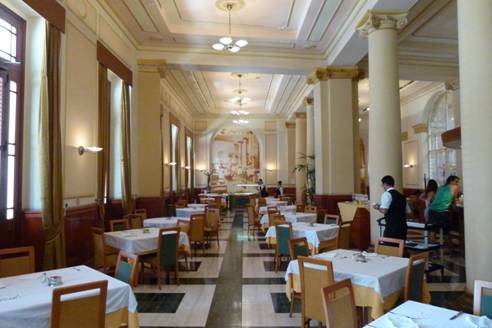What can I say about Cuba?
In the late ‘70s I lived on the boundary of Paddington in Sydney and walked to and from work in the city. Between my home and work there was an area of terrace housing in Darlinghurst that had been resumed by the State for the construction of a road tunnel and traffic interchanges. Squatters had moved into some of the ‘DMR affected’ houses. Most of these were young people, students, rock bands and radically unemployed alternative culture advocates; hippies.
Those houses in this socially vibrant area that were not condemned by the road building were rented to people who were happy with these neighbours: artists; writers; musicians; even some younger professionals; and a number were brothels.
Graffiti was a local art form. ‘Disarm Rapists’ competed with ‘Lesbianism Sucks’. A finely finished sandstone wall bore the inscription in copperplate style: ‘Eradicate Gratuitous Vandalism’. The 'red light' area was frequented, in addition to the girls, by incognito men and 'flashers'. A sign high on the local church warned these sinners ‘Jesus is Coming’. Below it someone had written ‘button up your raincoats’.
This experience unwittingly prepared me for Cuba.
In 1959 Fidel Castro overthrew Fulgencio Batista the corrupt dictator of Cuba and installed a strict Marxist-Leninist political and economic system. While not as radical as that of Pol Pot in Cambodia the immediate impact was the eradication of private property and the peasantry was invited to move into the homes and hotels of the rich. Thus the cities became giant squats.

Many of those original squatters are now very elderly or dead but their children and grandchildren live in what has become a family tradition.
Back in Australia, the Darlinghurst squatters mostly grew-up and moved on. Some to fame as artists; musicians or writers; some overdosed and some contracted AIDS. Most got regular jobs and moved to better homes; their children in turn enjoying a personal bedroom, modern kitchens and bathrooms; many are now travelling the world.
But Cuban children came to think of temporary wires as electricity services; hose pipes as plumbing; and a packing case as a table or chair. It sort of works but it is essentially squalid. Now the older buildings themselves are falling down and no one seems to be prepared to make major repairs or renovations to property they do not own.
Where ownership or at least a long term lease has been allowed there are wonderful exceptions. Tourist hotels are an example. The restored up-market hotels are world-class, some brilliantly renovated. There are also a few excellent restaurants.

The dining room at the Telegraph Hotel
But these exceptions stand out against a background of very sub-standard accommodation and food. Cuba is not a place to back-pack or ‘do it on the cheap’; unless you like living in a squat and eating beans from a can.
